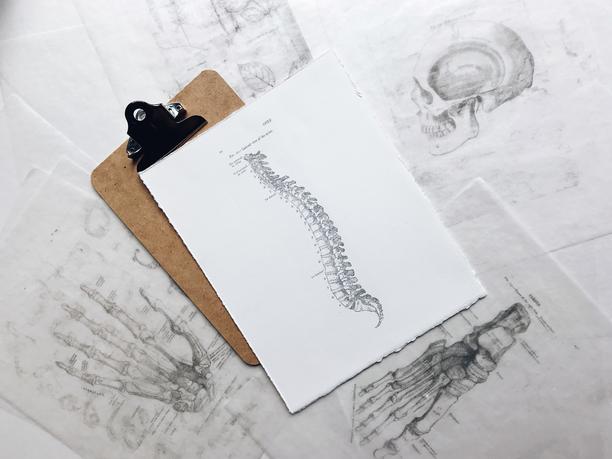|
The incidence rates of spine surgery in the US
The US has the highest rate of spine surgeries in the world. In the 1980s rates increased by 55%. In the 1990s studies of spine surgery rates became more challenging because >20% of common spine procedures shifted to out-patient settings. Extrapolations from ambulatory surgical data suggest that throughout the 1990s, spine surgery rates continued to rise. The most rapid increase was for spinal fusion, which tripled during the decade and accounted for an increasing proportion of all spine procedures.
Since the 1990s, numerous studies have described the continued growth of spine surgery in the US, where today ~1.6m spine procedures are performed annually. Between 2004 and 2015, the volume of spinal fusions increased by 62%. During this 12-year period, aggregate hospital costs increased 177%, exceeding US$10bn in 2015 and averaging >US$50,000 per admission. A 1994 international comparative study found that, “the rate of back surgery in the US was at least 40% higher than in any other country and was more than five times that in England. Back surgery rates increased almost linearly with the per capita supply of orthopaedic and neurosurgeons in the country”.
The spinal implant and devices market
Over the past four decades, the high and increasing prevalence of spine surgeries has contributed to a high margin, profitable, global spinal implant and devices industry, comprised of ~400 companies but dominated by just four large American corporations: Medtronic, DePuy Synthes (Johnson & Johnson), NuVasive and Stryker. These four control ~70% of the market, which in 2019 was valued at ~US$10.3bn, projected to grow at a compound annual growth rate (CAGR) of ~5%, and reach ~US$14bn by 2025. The US market segment alone was valued in 2020 at ~US$7.5bn, growing at a CAGR of 5.3% and expected to reach ~US10bn by 2025.
These spine market numbers include revenue from implants, instruments, and surgical assistance systems (robotics and navigation) to treat a variety of conditions. The industry has benefitted from advances in spine surgery technologies, the launch of novel bone grafting products and the increasing adoption of minimally invasive spine surgery (MISS). However, spinal fusion devices are the second largest segment of spine products behind plates and screws.
As a possible consequence of the industry’s rapid growth and relatively high margins, many spine companies have come to rely on linear supply chains and developed “cosy labour-intensive relationships” between producers, clinicians, hospitals, and payors. However, the high cost of spine surgery, tightening regulations and more stringent reimbursement policies threaten this business model.
Good news for spine companies
Bad news for spine companies
Working age populations in the US and other spine markets ‘pay’ for the surgeries of the large and growing cohorts of retirees with sedentary lifestyles and LBP. However, working aged populations in these regions are declining because of falling fertility rates and professional women delaying motherhood. This suggests, ceteris paribus, that for the foreseeable future, a shrinking pool of working-age people will be forced to support expensive spine surgeries for a vast and rapidly expanding cohort of aging retirees. Thus, it seems reasonable to suggest that the current trajectory of spending on spine surgeries in the major spine markets of the world is unsustainable, and increasingly, likely to exert downward fiscal pressure on spine companies.
Changing ecosystem
Population effectiveness
In wealthy spine markets decisions that used to be the sole preserve of doctors are increasingly being made by regulators, hospital administrators and other non-clinicians. This broader set of influencers have different objectives to doctors and prioritize cost effectiveness or even just costs. This is fuelling a shift away from individual patient outcomes towards a focus on the cost effectiveness of specific spine procedures on a given population. For example, the overall improvement within a cohort of patients ≥65 with LBP and degenerative disc disorders and a given level of spending by a hospital group on spinal fusions.
Innovations increasing in significance
Such shifts have encouraged innovations, which enhance outcomes and are positioned to change the standard of spine care. These include, minimally invasive spine surgery (MISS), robotics, computer assisted navigation, motion preserving technologies, and ortho-biologics, which will be discussed in future Commentaries. For now, let us finish by suggesting that such innovations could erode the competitiveness of traditional spine companies that are slow to change, and enhance the competitiveness of companies with the mindset, resources, and capabilities to invest in these evolving technologies.
Takeaways
Fiscal, technological, and demographic trends are driving the demand for competitively priced spinal implants and devices. Cost conscious US hospitals have consolidated to increase their buying power. Purchasing has become more centralized as hospital groups have leveraged their scale by standardizing processes and procedures across facilities. Providers have sharpened their focus on the cost effectiveness of spinal implants and devices and engaged in M&A activities to enhance their scale, R&D, and marketing. This has expanded the range of product offerings a single company supplies, but also it has increased market concentration, which advantages a few large dominant companies. The effect of these trends has yet to transform the strategies and business models of the overwhelming majority of traditional medium to small size spine companies, which will be needed for them to remain relevant in the future.
|


Comments